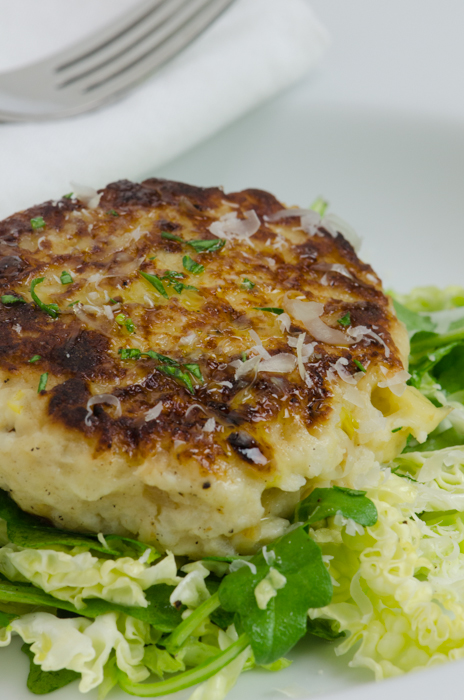 Our favorite evening during tours through Alto Adige is the one we spend exploring the unique cuisine of Sudtirol with Chef Michael Seehauser. This season he introduced us to a new version of the traditional South Tyrolean dumplings, called ‘canederli’. Michael attributes this version to the Puster Valley, Val Pusteria in Italian. This is a valley in the Alps that runs in an east-west direction between Lienz in East Tyrol, Austria and Mühlbach near Brixen in South Tyrol, Italy. There is a scenic bike path that runs the length of this valley, a great destination for our cycling tours and hiking adventures.
Our favorite evening during tours through Alto Adige is the one we spend exploring the unique cuisine of Sudtirol with Chef Michael Seehauser. This season he introduced us to a new version of the traditional South Tyrolean dumplings, called ‘canederli’. Michael attributes this version to the Puster Valley, Val Pusteria in Italian. This is a valley in the Alps that runs in an east-west direction between Lienz in East Tyrol, Austria and Mühlbach near Brixen in South Tyrol, Italy. There is a scenic bike path that runs the length of this valley, a great destination for our cycling tours and hiking adventures.
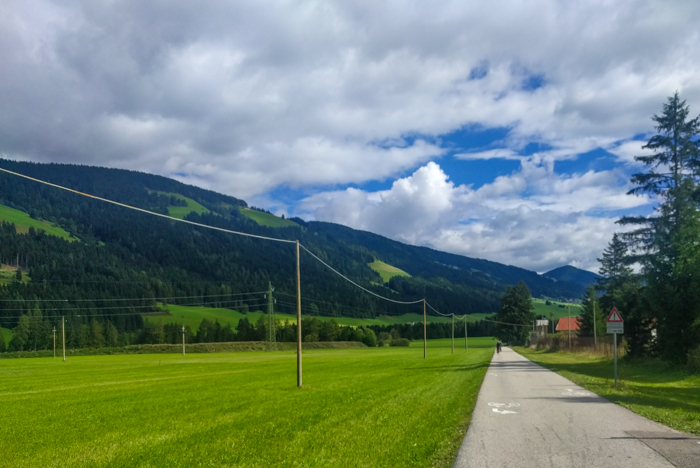 A dish of humble origins, there are numerous variations as a wide range of seasonal ingredients are used, and they can be served as a first course, side dish, or even a dessert. Legend has it that the dish was invented by an innkeeper’s lady to satisfy passing mercenaries. She kneaded the few remaining ingredients from her pantry to form balls of dough that she boiled in water. In the country homes South Tyrol, canederli were always part of the weekly menu although speck and wheat flour versions were Sunday and feast-day specialties.
A dish of humble origins, there are numerous variations as a wide range of seasonal ingredients are used, and they can be served as a first course, side dish, or even a dessert. Legend has it that the dish was invented by an innkeeper’s lady to satisfy passing mercenaries. She kneaded the few remaining ingredients from her pantry to form balls of dough that she boiled in water. In the country homes South Tyrol, canederli were always part of the weekly menu although speck and wheat flour versions were Sunday and feast-day specialties.
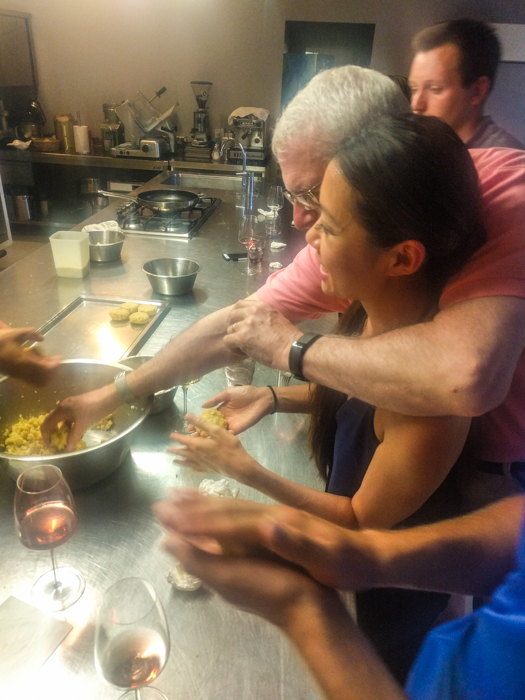 The version Michael showed us incorporated a very interesting local cheese, Graukäse. A cheese of ancient origin, a sort of primordial cheese as described by Slow Food, it belongs to the family of sauerkase, the acid coagulation cheeses that do not involve the use of rennet. Graukäse is made between June and September, with the milk that has been skimmed for the production of butter. This was traditionally made using raw milk, and as cheese production has moved to larger dairies which use pasteurized milk and ferments, this cheese has become hard to find. The Slow Food Presidium of Graukäse of the Ahr Valley wants to promote the recovery of this craft cheese, and resume the original traditional technique which produces a single cheese a day, using raw milk from local farms. The traditional technique includes aging for 2-3 weeks on fir shelves, then a cold aging period of 12 weeks, during which the cheese develops a coating of grey-green mold, giving rise to the name Graukäse, or grey cheese in German.
The version Michael showed us incorporated a very interesting local cheese, Graukäse. A cheese of ancient origin, a sort of primordial cheese as described by Slow Food, it belongs to the family of sauerkase, the acid coagulation cheeses that do not involve the use of rennet. Graukäse is made between June and September, with the milk that has been skimmed for the production of butter. This was traditionally made using raw milk, and as cheese production has moved to larger dairies which use pasteurized milk and ferments, this cheese has become hard to find. The Slow Food Presidium of Graukäse of the Ahr Valley wants to promote the recovery of this craft cheese, and resume the original traditional technique which produces a single cheese a day, using raw milk from local farms. The traditional technique includes aging for 2-3 weeks on fir shelves, then a cold aging period of 12 weeks, during which the cheese develops a coating of grey-green mold, giving rise to the name Graukäse, or grey cheese in German.
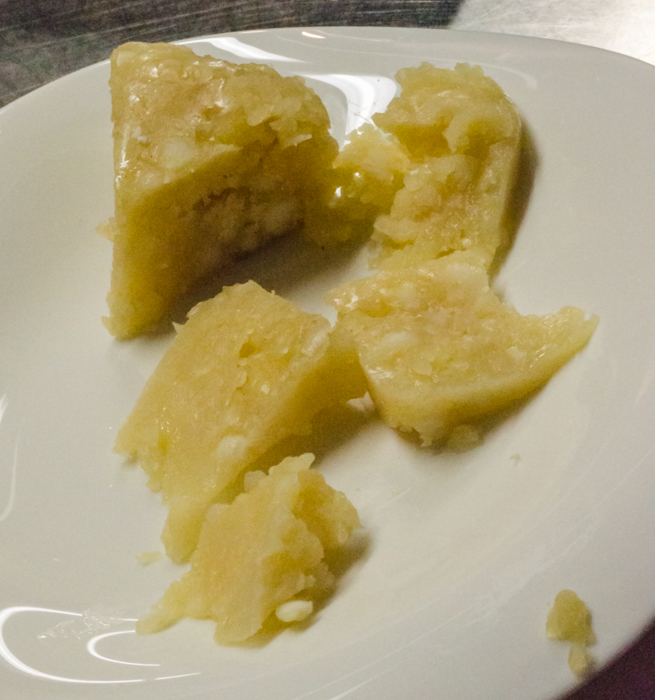 This recipe for canederli, unlike most versions, uses potatoes as well as bread, making for nice and moist dumplings. Of course, here in the US I could not locate authentic Graukäse, so I substituted a lower fat cheese that came as close as I could find to the strong flavor and powerful aroma of Graukäse.
This recipe for canederli, unlike most versions, uses potatoes as well as bread, making for nice and moist dumplings. Of course, here in the US I could not locate authentic Graukäse, so I substituted a lower fat cheese that came as close as I could find to the strong flavor and powerful aroma of Graukäse.
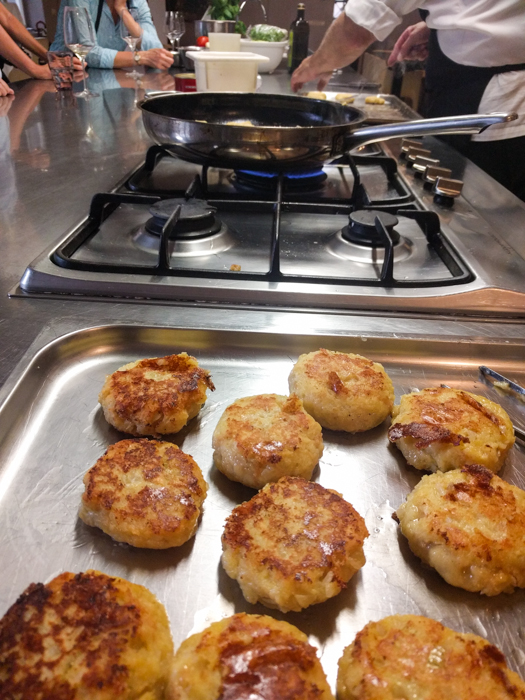 Canederli Pusteresi su Insalata di Capucci e Rucola
Canederli Pusteresi su Insalata di Capucci e Rucola
Ingredients for 6 people – 12 canederli
1 cup onion, finely chopped
4 tablespons butter
10 ounces small cubes of stale bread
7 ounces strong cheese
3 eggs, beaten
3 medium russet potatoes, peeled, cooked and riced
1/2 cup milk
6 tablespoons flour
1 small cabbage, thinly sliced
2 small bunches of arugula
white wine vinegar
extra virgin olive oil
Kosher salt and freshly ground pepper
Saute the onions in 1 tablespoon of the butter until soft and lightly browned. Add the bread and mix well. Cut the cheese into small cubes and add to the bread mixture amd mix again. Add the eggs, potatoes, milk and flour to the bread mixture, then stir until all ingredients are combined evenly through the dough. Form the dough into 12 round, flat dumplings.
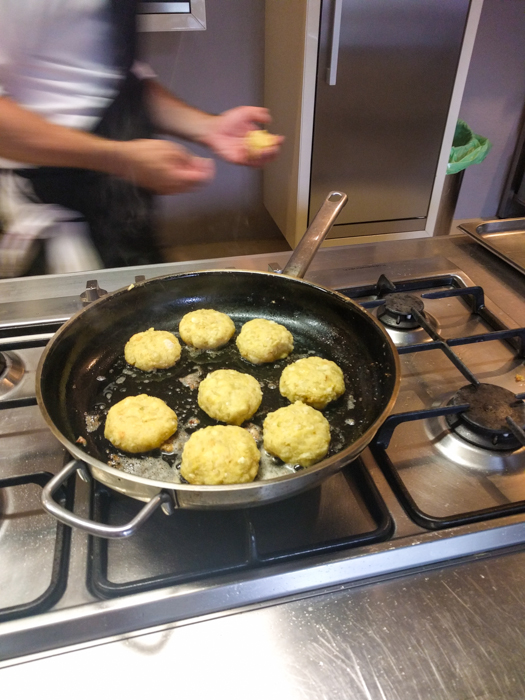
Saute the dumplings in butter in a hot saute pan, turning to brown on both sides. Bring a large pan of water to a full boil, add salt, then poach the dumplings for 10 minutes.
In a large bowl, mix the cabbage with the arugula. Season with olive oil, vinegar, salt and pepper and divide between 6 serving plates. Top with 2 dumplings, garnish with a bit of grated cheese.
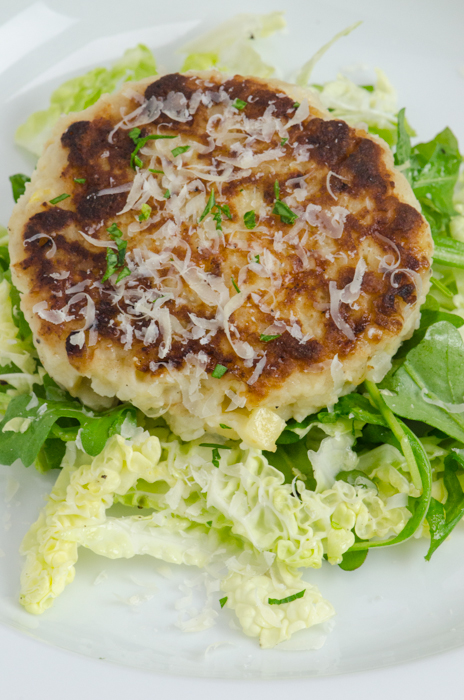
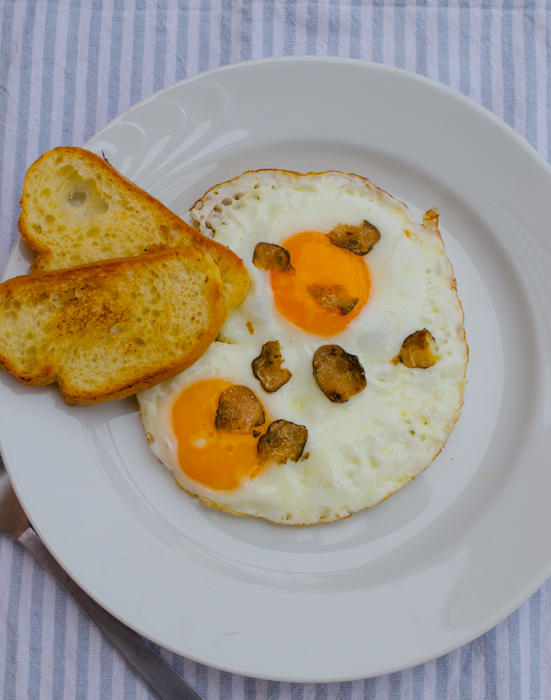 Even the most ordinary of foods can seem special and of higher quality when we experience them in Italy. A question asked over breakfast, as one of our guests cracks open a lovely soft boiled egg and is presented with the creamy yolk,“Why is the egg yolk so orange?” We’ve had many a conversation on this subject, and learned a lot from the various chefs we’ve worked with on our cycling and hiking tours. From them we’ve learned eggs are even named according to the color of their yolks, with yellows referred to as giallo dell’uovo, and the more highly prized orange yolked eggs called rosso d’uovo. But why are the yolks so orange, and why are they better?
Even the most ordinary of foods can seem special and of higher quality when we experience them in Italy. A question asked over breakfast, as one of our guests cracks open a lovely soft boiled egg and is presented with the creamy yolk,“Why is the egg yolk so orange?” We’ve had many a conversation on this subject, and learned a lot from the various chefs we’ve worked with on our cycling and hiking tours. From them we’ve learned eggs are even named according to the color of their yolks, with yellows referred to as giallo dell’uovo, and the more highly prized orange yolked eggs called rosso d’uovo. But why are the yolks so orange, and why are they better?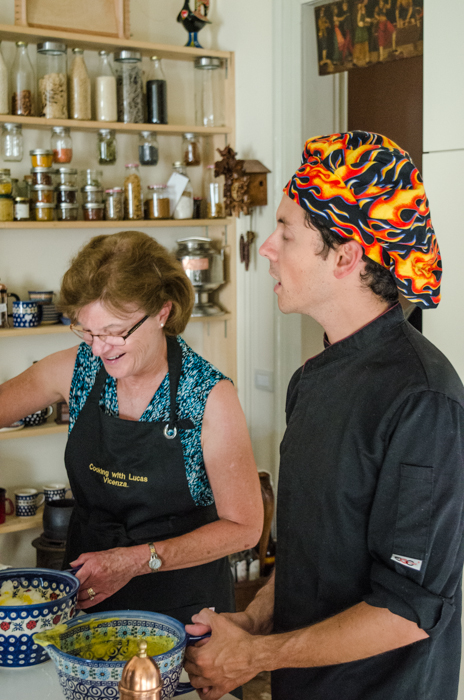
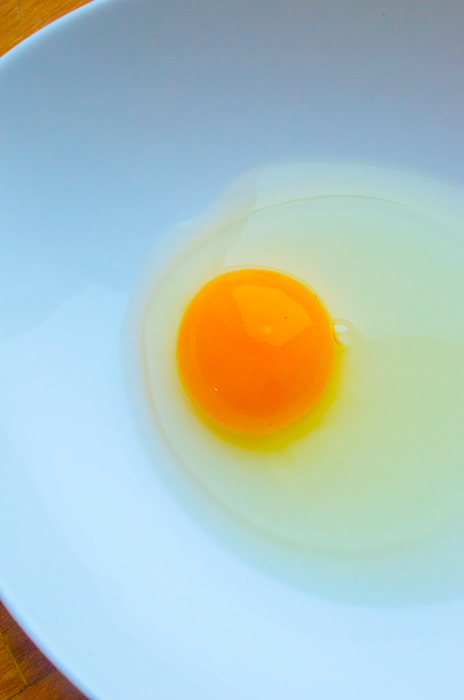 Hens that truly are pasture-raised, foraging on green plants and bugs, have a diet full of these carotenoids. As a result, their yolks have this bright orange color, so this color is a sign of a healthy diet full or nutrients.
Hens that truly are pasture-raised, foraging on green plants and bugs, have a diet full of these carotenoids. As a result, their yolks have this bright orange color, so this color is a sign of a healthy diet full or nutrients.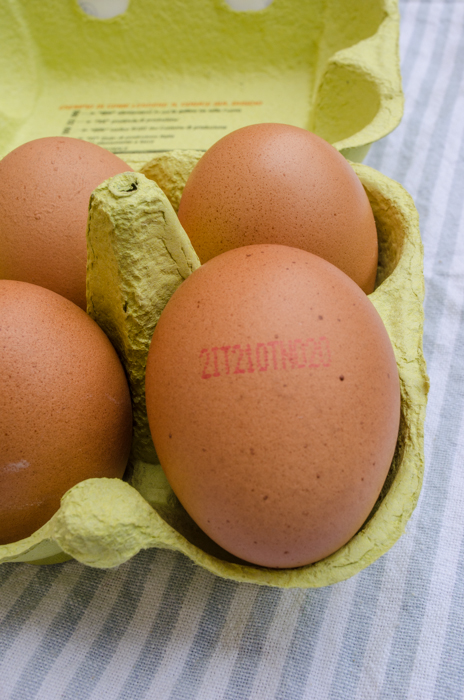 In order to assist European consumers determine the source of their eggs, EU regulations dictate that each egg sold must be marked with an “egg code”, which allows the consumer to identify the source of the egg, the method of production – organic production, free-range, deep litter indoor housing or cage farming – even a registration number indicating the hen laying establishment.
In order to assist European consumers determine the source of their eggs, EU regulations dictate that each egg sold must be marked with an “egg code”, which allows the consumer to identify the source of the egg, the method of production – organic production, free-range, deep litter indoor housing or cage farming – even a registration number indicating the hen laying establishment.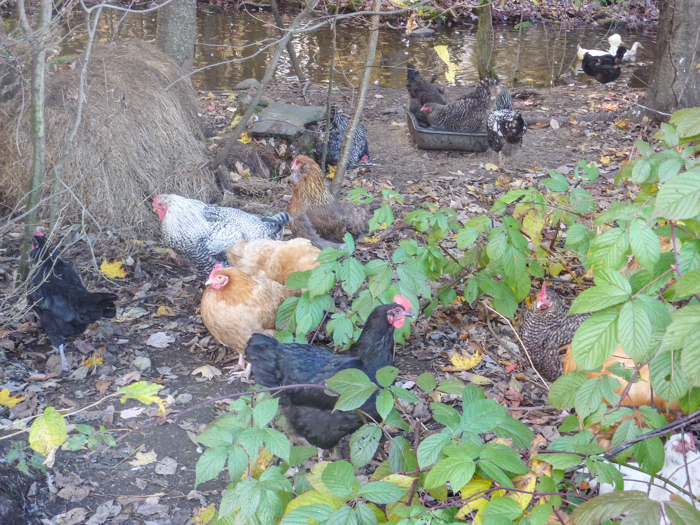 Another interesting difference appears when we go to the market to purchase eggs. We expect to find them in a refrigerated case, as they are sold in the US. Instead, they are on a shelf at room temperature. In order to prevent salmonella, US egg producers are required by the USDA to thoroughly wash the eggs before they go to market. They’re rinsed in hot water, dried and sprayed with a chlorine mist immediately after gathering. This washing removes a thin, naturally occurring coating on the egg, called the cuticle, which prevents any contamination from penetrating the shell. In Europe, producers instead vaccinate laying hens to prevent the transmission of salmonella, and then do not wash the eggs, leaving the protective cuticle intact. Here, refrigeration is actually discouraged, as cooling and then warming could create condensation, which would allow salmonella to penetrate the shell.
Another interesting difference appears when we go to the market to purchase eggs. We expect to find them in a refrigerated case, as they are sold in the US. Instead, they are on a shelf at room temperature. In order to prevent salmonella, US egg producers are required by the USDA to thoroughly wash the eggs before they go to market. They’re rinsed in hot water, dried and sprayed with a chlorine mist immediately after gathering. This washing removes a thin, naturally occurring coating on the egg, called the cuticle, which prevents any contamination from penetrating the shell. In Europe, producers instead vaccinate laying hens to prevent the transmission of salmonella, and then do not wash the eggs, leaving the protective cuticle intact. Here, refrigeration is actually discouraged, as cooling and then warming could create condensation, which would allow salmonella to penetrate the shell.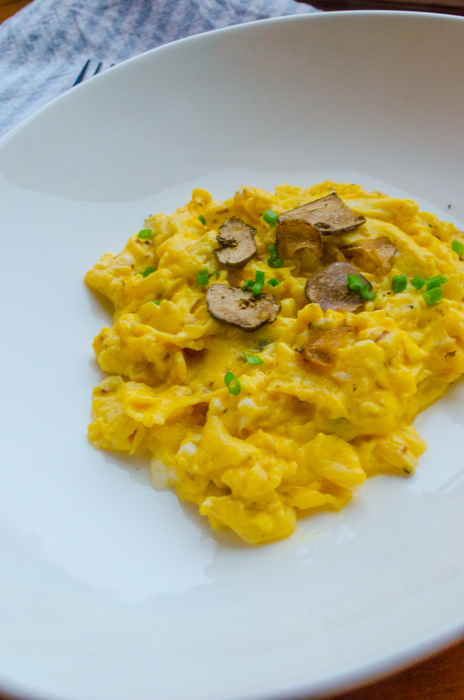 Something as simple as a healthy egg doesn’t need a lot of other ingredients to shine in a dish. Scrambled or fried eggs, garnished with minced chives, or perhaps a shaving of truffles to bring it over the top. A dinner during a visit to Piemonte featured a private table in the kitchen itself, where we were served lovely golden agnolotti, made with only egg yolks. A poached egg topping of a plate of Spaghetti Carbonara. Thankfully, I’m beginning to find eggs like these – great quality, pastured raised, with the signature bright orange yolks – here in the US. And they are, interestingly enough, not necessarily the most expensive egg on sale!
Something as simple as a healthy egg doesn’t need a lot of other ingredients to shine in a dish. Scrambled or fried eggs, garnished with minced chives, or perhaps a shaving of truffles to bring it over the top. A dinner during a visit to Piemonte featured a private table in the kitchen itself, where we were served lovely golden agnolotti, made with only egg yolks. A poached egg topping of a plate of Spaghetti Carbonara. Thankfully, I’m beginning to find eggs like these – great quality, pastured raised, with the signature bright orange yolks – here in the US. And they are, interestingly enough, not necessarily the most expensive egg on sale!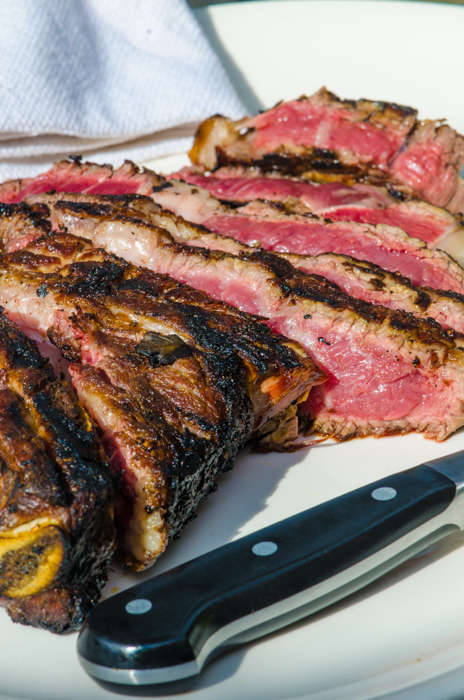 A culinary highlight of our Tuscany cycling and walking tours is not necessarily what one would expect in Italy – an amazing steak dinner – Bistecca alla Fiorentina. A classic dish of this region, this thick cut large steak is grilled over a wood or charcoal fire, simply seasoned with salt and freshly ground pepper and drizzled with extra virgin olive oil just after grilling. Bistecca are sold by weight, usually starting about 1 kg (2.2 pounds), so are typically shared between two or more, making the meal a fun, communal experience.
A culinary highlight of our Tuscany cycling and walking tours is not necessarily what one would expect in Italy – an amazing steak dinner – Bistecca alla Fiorentina. A classic dish of this region, this thick cut large steak is grilled over a wood or charcoal fire, simply seasoned with salt and freshly ground pepper and drizzled with extra virgin olive oil just after grilling. Bistecca are sold by weight, usually starting about 1 kg (2.2 pounds), so are typically shared between two or more, making the meal a fun, communal experience.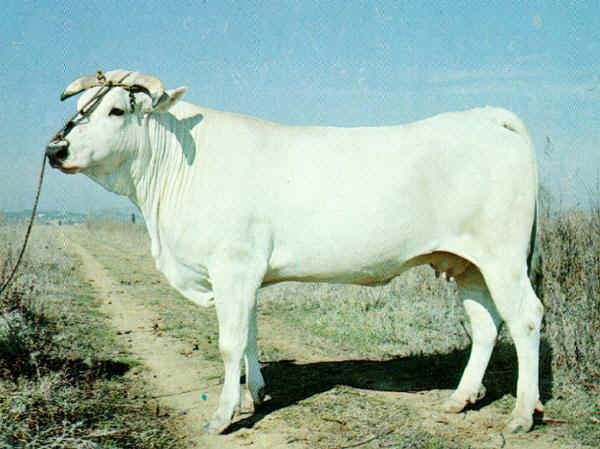 In Tuscany, this dish showcases the regions native breed of cattle, the Chianina. One of the largest breeds of cattle in the world, cows average 1700 pounds, and mature bulls around 2700 pounds, and can be as large as 3500 pounds. They are distinctive, with their immense size, white color and well-defined musculature. The name comes from their area of origin, Valdichiana (Chiana Valley) in Tuscany, on the plains near Arezzo and Siena.
In Tuscany, this dish showcases the regions native breed of cattle, the Chianina. One of the largest breeds of cattle in the world, cows average 1700 pounds, and mature bulls around 2700 pounds, and can be as large as 3500 pounds. They are distinctive, with their immense size, white color and well-defined musculature. The name comes from their area of origin, Valdichiana (Chiana Valley) in Tuscany, on the plains near Arezzo and Siena.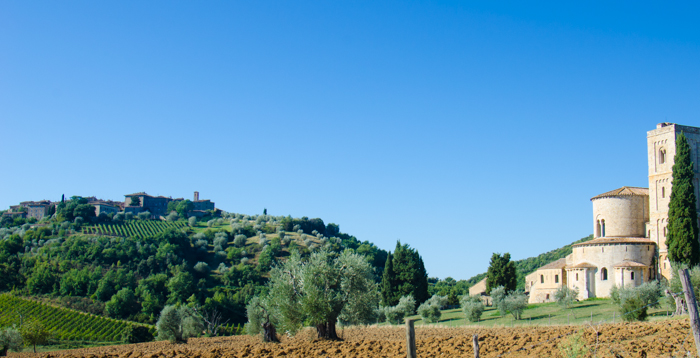 The Chianina is one of the oldest breeds of cattle in existence. They were the models for the cattle depicted in Roman sculptures, and praised by the Georgic poets, Columella and Vergil. Chianina were originally used by farmers as draft animals and for road transport. They adapted well to the steep hill terrain and well suited to the mixed agriculture and small farms of the mezzadri (sharecroppers). Since the introduction of mechanized methods in the early 20th century, they are now rarely seen out and about and are bred solely for meat production.
The Chianina is one of the oldest breeds of cattle in existence. They were the models for the cattle depicted in Roman sculptures, and praised by the Georgic poets, Columella and Vergil. Chianina were originally used by farmers as draft animals and for road transport. They adapted well to the steep hill terrain and well suited to the mixed agriculture and small farms of the mezzadri (sharecroppers). Since the introduction of mechanized methods in the early 20th century, they are now rarely seen out and about and are bred solely for meat production.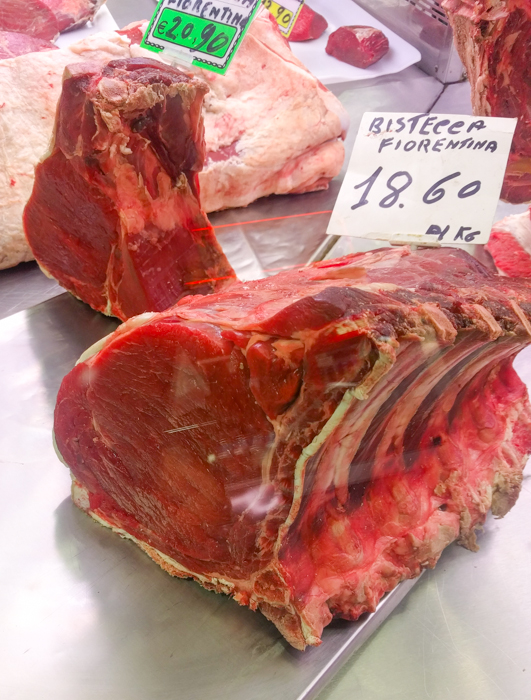 Since the Second World War the Chianina has spread worldwide, raised almost exclusively for its high quality meat. Through exportation of breeding stock, Chianina has reached China, Russia, Asian countries and the Americas, where it has been cross-bred with Angus. But no dining experience compares to enjoying a Bistecca and a glass of Brunello on a terrace overlooking the Valdichiana.
Since the Second World War the Chianina has spread worldwide, raised almost exclusively for its high quality meat. Through exportation of breeding stock, Chianina has reached China, Russia, Asian countries and the Americas, where it has been cross-bred with Angus. But no dining experience compares to enjoying a Bistecca and a glass of Brunello on a terrace overlooking the Valdichiana.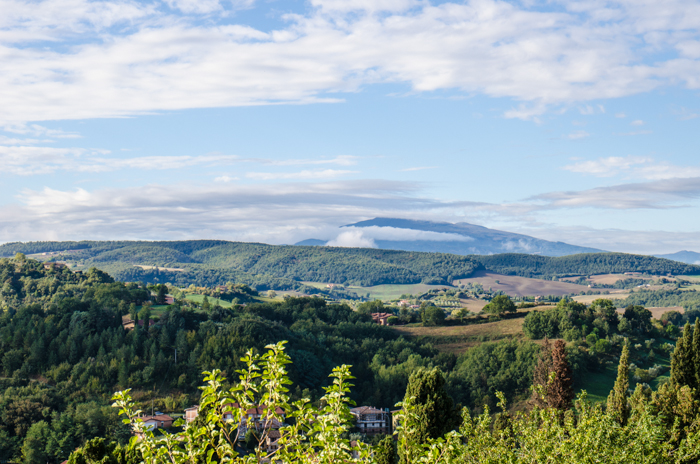 To come close to recreating the experience at home:
To come close to recreating the experience at home: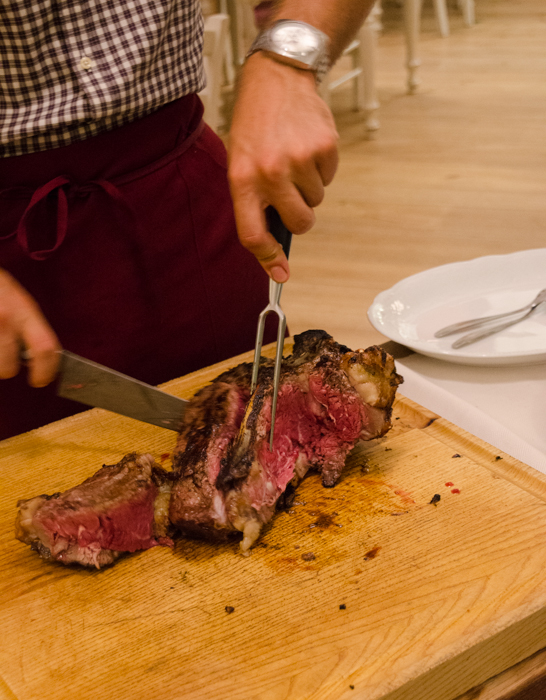 Grill over hardwood charcoal – not briquets – over very high heat. Allow steak to come to room temperature before grilling. Sear over high heat, 3 – 4 minutes per side for a 2-inch thick steak. This is to be served VERY RARE, “al sangue”. If you have guests who prefer well-done, have a couple of strip steaks to cook for them!
Grill over hardwood charcoal – not briquets – over very high heat. Allow steak to come to room temperature before grilling. Sear over high heat, 3 – 4 minutes per side for a 2-inch thick steak. This is to be served VERY RARE, “al sangue”. If you have guests who prefer well-done, have a couple of strip steaks to cook for them!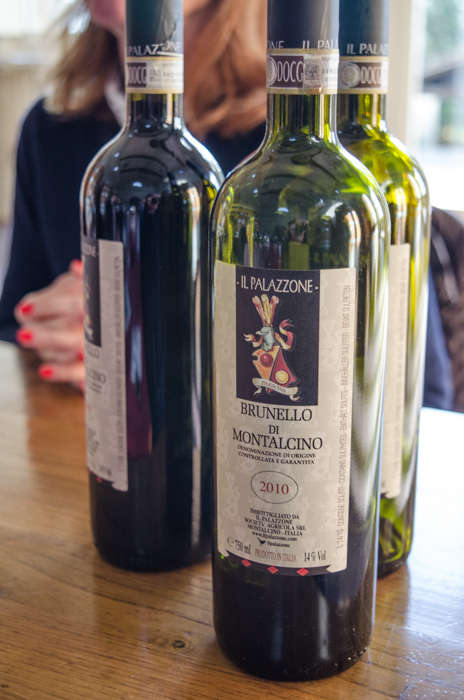
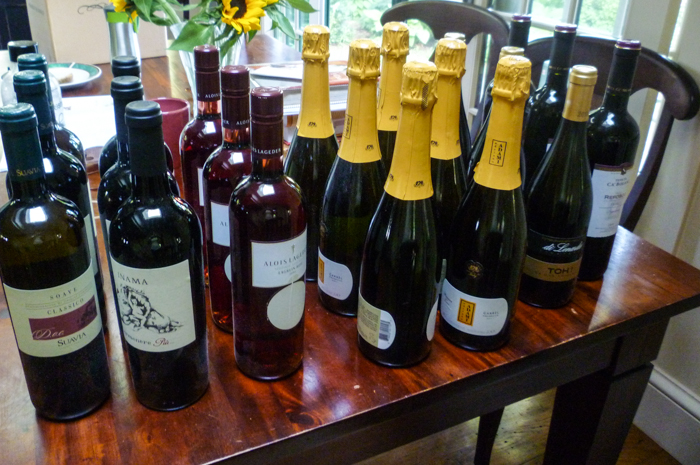 This uniquely American holiday embraces the same traditions as Italians keep during their numerous festivals and feast days – gathering family and friends to observe the day with a celebratory meal of dishes that reflect the history of their families and culture. In past posts I’ve shared some Italian-themed dishes that might play a role on a Thanksgiving table, like
This uniquely American holiday embraces the same traditions as Italians keep during their numerous festivals and feast days – gathering family and friends to observe the day with a celebratory meal of dishes that reflect the history of their families and culture. In past posts I’ve shared some Italian-themed dishes that might play a role on a Thanksgiving table, like 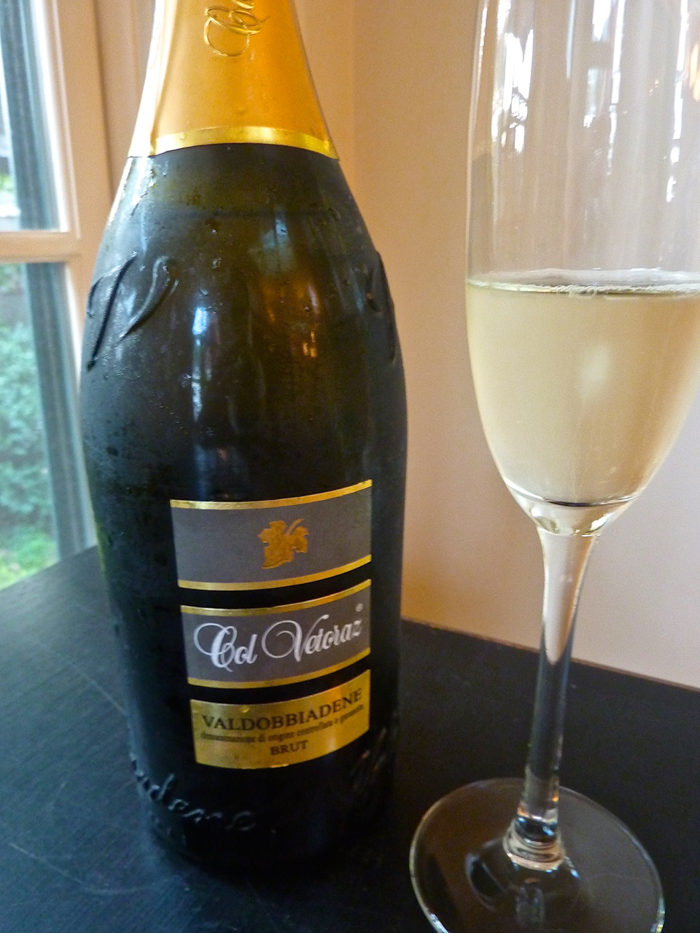 This dramatic growth in popularity has brought to market many so-called “Prosecco” suppliers who are not located in the traditional hill-region that produces the best grapes, and do not adhere to the same quality standards. In an effort to combat this trend, a new quality designation was earned by the sparking wines from the original Valdobbiadene to Conegliano area – the Conegliano Valdobbiadene Prosecco Superiore DOCG (Denominazione di Origine Controllata e Garantita.) This is the highest quality designation for Italian wines.
This dramatic growth in popularity has brought to market many so-called “Prosecco” suppliers who are not located in the traditional hill-region that produces the best grapes, and do not adhere to the same quality standards. In an effort to combat this trend, a new quality designation was earned by the sparking wines from the original Valdobbiadene to Conegliano area – the Conegliano Valdobbiadene Prosecco Superiore DOCG (Denominazione di Origine Controllata e Garantita.) This is the highest quality designation for Italian wines.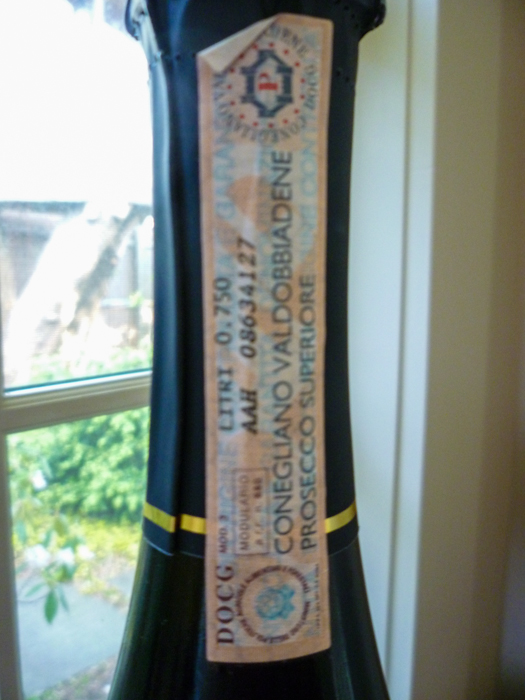 So look for the DOCG phrase on the label. The bottle will also often bear a distinctive fascetta, or band, which covers the cork. This verifies the producer has followed the rules, paid their taxes and are not exceeding the restrictions on yields and production. Prosecco is labeled according to the amount of sugar that remains after fermentation; the sweetest are “Dry”, best with a dessert, then “Extra-Dry”, with the driest versions labeled “Brut”, best for that aperitif or with savory foods. Another phrase you may see on the bottle is “Millisimato”. Most sparkling wines are produced from grapes from multiple years. Millesimato spumante wines are produced from grapes grown in a single year. Finally, within the Prosecco DOCG area, there are two sub-zones that are considered the best of the best, the “Grand Cru” vineyards. The names to look for here are Cartizze or Rive.
So look for the DOCG phrase on the label. The bottle will also often bear a distinctive fascetta, or band, which covers the cork. This verifies the producer has followed the rules, paid their taxes and are not exceeding the restrictions on yields and production. Prosecco is labeled according to the amount of sugar that remains after fermentation; the sweetest are “Dry”, best with a dessert, then “Extra-Dry”, with the driest versions labeled “Brut”, best for that aperitif or with savory foods. Another phrase you may see on the bottle is “Millisimato”. Most sparkling wines are produced from grapes from multiple years. Millesimato spumante wines are produced from grapes grown in a single year. Finally, within the Prosecco DOCG area, there are two sub-zones that are considered the best of the best, the “Grand Cru” vineyards. The names to look for here are Cartizze or Rive.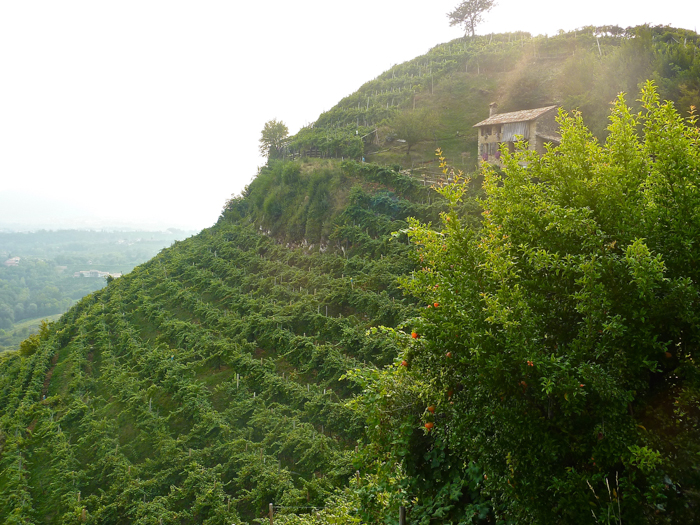
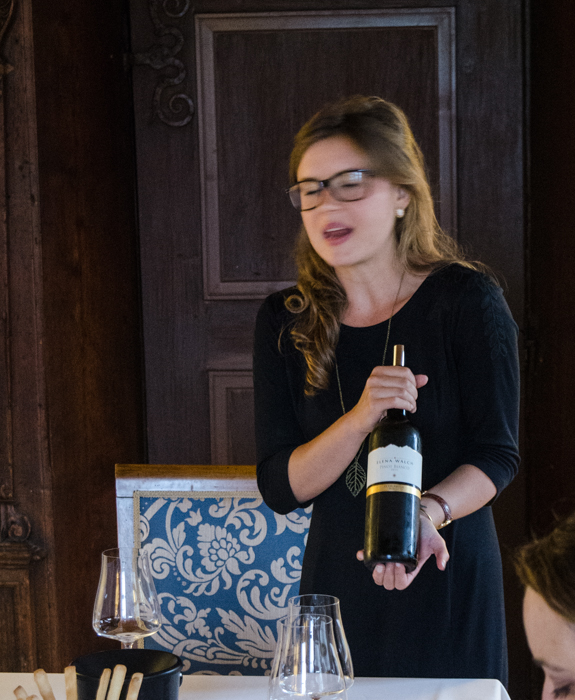
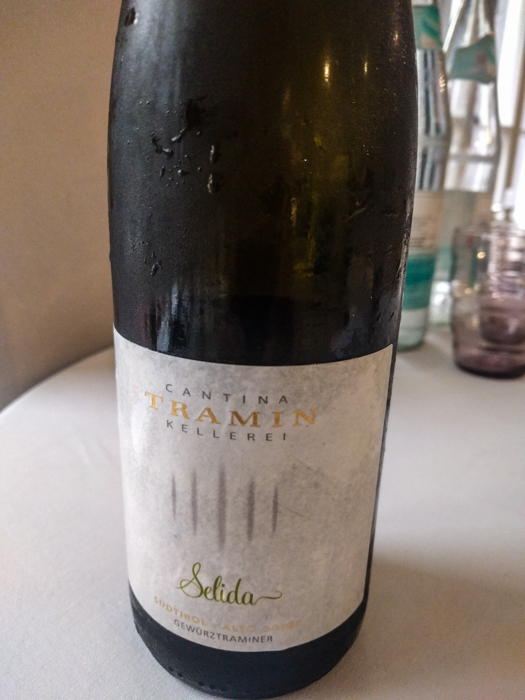 One of my favorite whites from this region is Gewurztraminer. The name translates to “the spicy wine from Tramin”, a town in Alto Adige we visit during our walking and cycling tours, and is wonderfully fragrent with notes of floral and lychee nuts, and spices like allspice and cloves. Gewurztraminer pairs well with spicier foods, so if your family is fond of turkey recipes that are Mexican or Asian themed, this would be a great option. Check out wines from
One of my favorite whites from this region is Gewurztraminer. The name translates to “the spicy wine from Tramin”, a town in Alto Adige we visit during our walking and cycling tours, and is wonderfully fragrent with notes of floral and lychee nuts, and spices like allspice and cloves. Gewurztraminer pairs well with spicier foods, so if your family is fond of turkey recipes that are Mexican or Asian themed, this would be a great option. Check out wines from 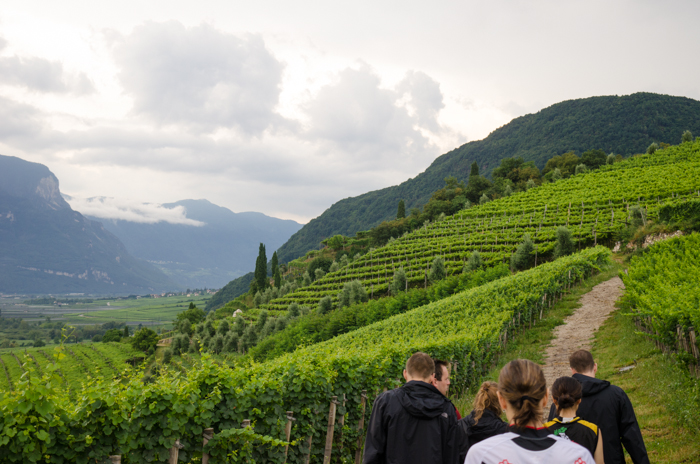
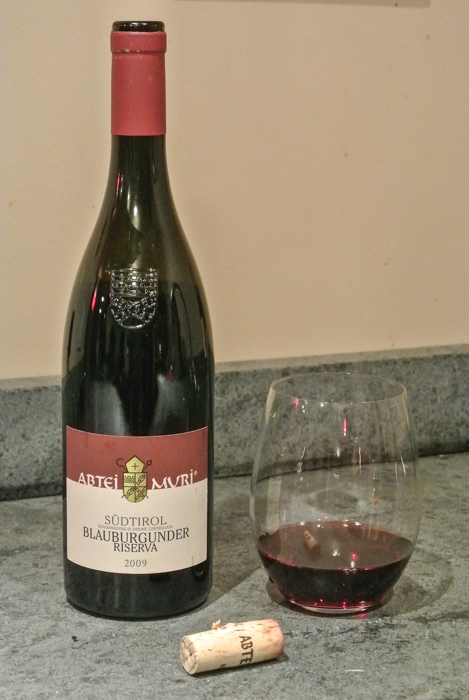 Pinot Noir in Italy is called Pinot Nero, or in Alto Adige you will see its German name, Blauburgunder. On the lighter side of the red wine spectrum, Pinot Noir is light enough for fish but complex enough to hold up to some richer dishes, making it perfect for the vast array of flavors that Thanksgiving brings. As Pinot Noir thrives best in more northern climates, again I would recommend looking for wines with a DOC designation from Trentino-Alto Adige or Friuli-Venezia Giulia. Abbazia di Novacella, J. Hofstatter and Muri-Gries are quality producers that can be found here in the US.
Pinot Noir in Italy is called Pinot Nero, or in Alto Adige you will see its German name, Blauburgunder. On the lighter side of the red wine spectrum, Pinot Noir is light enough for fish but complex enough to hold up to some richer dishes, making it perfect for the vast array of flavors that Thanksgiving brings. As Pinot Noir thrives best in more northern climates, again I would recommend looking for wines with a DOC designation from Trentino-Alto Adige or Friuli-Venezia Giulia. Abbazia di Novacella, J. Hofstatter and Muri-Gries are quality producers that can be found here in the US.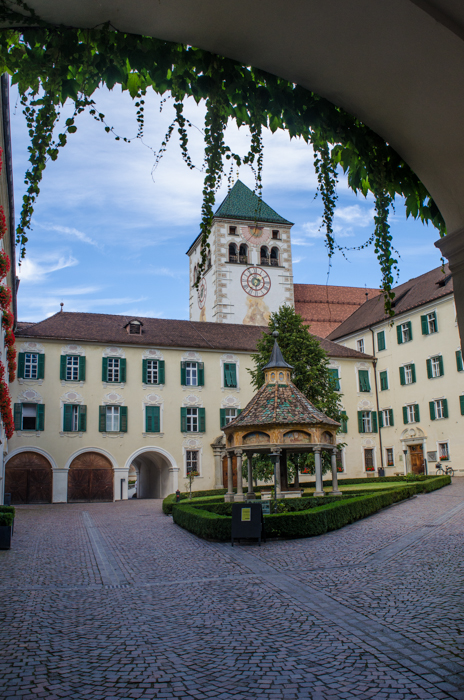
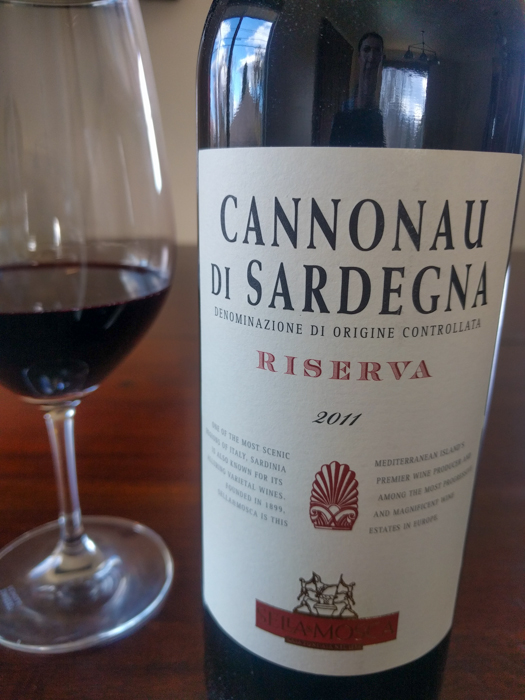 Grenache wines offer nice fruit flavor with good balance and acidity, and just the right amount of tannins to match well with many different dishes. The most widely planted grape in the world, it is not usually associated with Italy. But the island of Sardinia produces some wonderful Grenache wines, under the local name Cannonau. The Sella and Mosca Cannonau di Sardegna Riserva can be found here in the US for around $15 – 17 a bottle.
Grenache wines offer nice fruit flavor with good balance and acidity, and just the right amount of tannins to match well with many different dishes. The most widely planted grape in the world, it is not usually associated with Italy. But the island of Sardinia produces some wonderful Grenache wines, under the local name Cannonau. The Sella and Mosca Cannonau di Sardegna Riserva can be found here in the US for around $15 – 17 a bottle.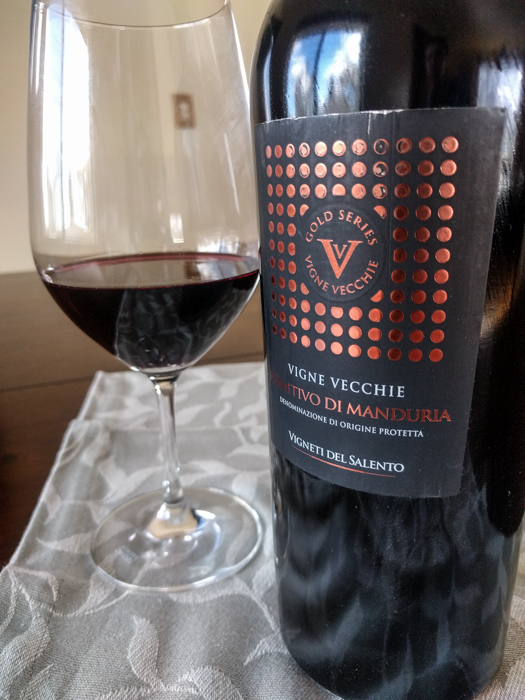 The strong fruity flavors and tobacco notes of a Zinfandel are an ideal match for rich dark or smoked turkey meat. Another grape variety not normally associated with Italy, it is cultivated in Puglia, the region of Italy that is the spur and heel of the boot. But again, you will not find it sold under the Zinfandel name, but under the local name, Primitivo. The most prestigious Primitivo wines come from the Primitivo di Manduria DOC.
The strong fruity flavors and tobacco notes of a Zinfandel are an ideal match for rich dark or smoked turkey meat. Another grape variety not normally associated with Italy, it is cultivated in Puglia, the region of Italy that is the spur and heel of the boot. But again, you will not find it sold under the Zinfandel name, but under the local name, Primitivo. The most prestigious Primitivo wines come from the Primitivo di Manduria DOC.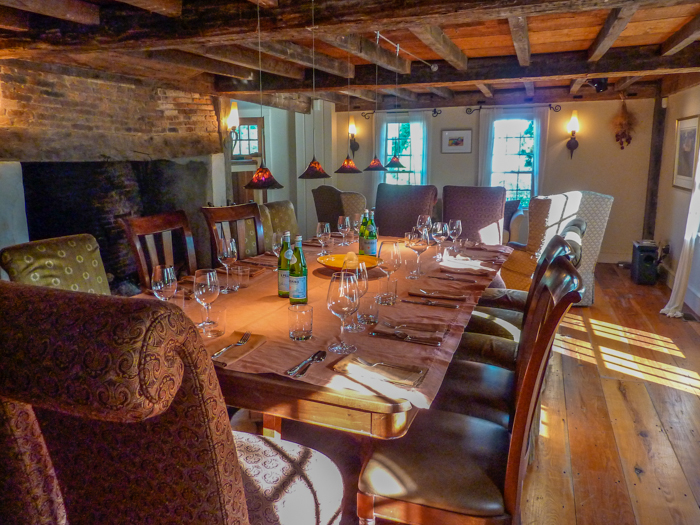
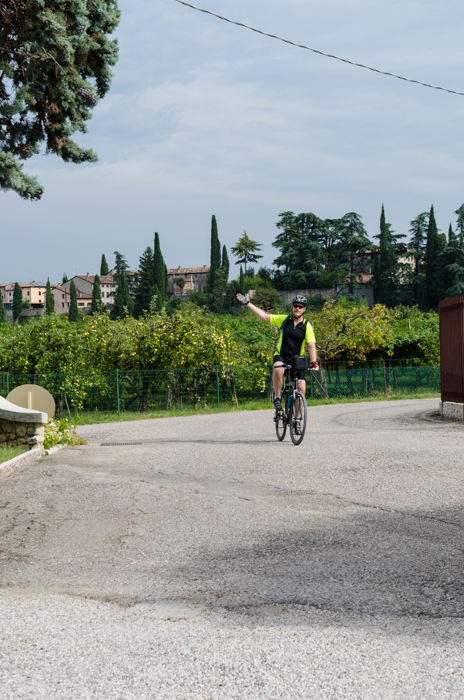 This September, guests on our
This September, guests on our 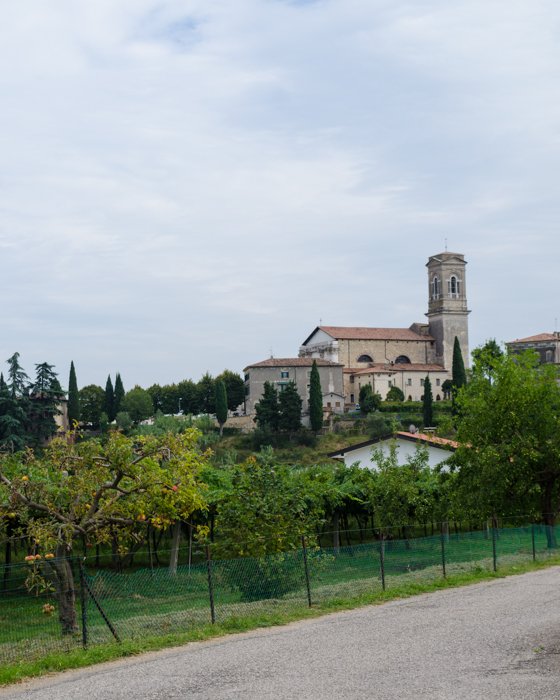 The main objective of the Brunelli Estate is to highlight the typical qualities of the grapes of the Valpolicella area. To quote Alberto Brunelli, “I have discovered, to my surprise, that many wines offer a complex personality. Sometimes it is similar to that of my grandfather; some are more like my father’s character, and yet others offer feminine perfumes and flavors that remind me of my mother and grandmother.” Alberto, in conjunction with his parents Luigi and Luciana, operate the winery today, following the footsteps of past generations.
The main objective of the Brunelli Estate is to highlight the typical qualities of the grapes of the Valpolicella area. To quote Alberto Brunelli, “I have discovered, to my surprise, that many wines offer a complex personality. Sometimes it is similar to that of my grandfather; some are more like my father’s character, and yet others offer feminine perfumes and flavors that remind me of my mother and grandmother.” Alberto, in conjunction with his parents Luigi and Luciana, operate the winery today, following the footsteps of past generations.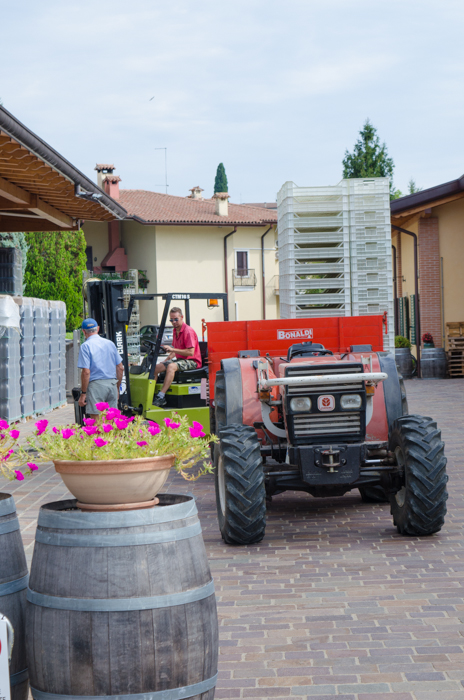 Our tour was in early September, just at the start of the harvest, our timing perfect for gaining insight into the production of one of Italy’s most prestigious wines, Amarone. Amarone wines are produced using the appassimento technique, allowing the grapes to dry before squeezing them to extract the juice. The grapes destined for an Amarone are the last to be picked in this zone, and then spend the next three to four months in drying rooms, being carefully desiccated to avoid mold and rot. The grapes not suitable for drying are pressed immediately and destined for Valpolicella wine.
Our tour was in early September, just at the start of the harvest, our timing perfect for gaining insight into the production of one of Italy’s most prestigious wines, Amarone. Amarone wines are produced using the appassimento technique, allowing the grapes to dry before squeezing them to extract the juice. The grapes destined for an Amarone are the last to be picked in this zone, and then spend the next three to four months in drying rooms, being carefully desiccated to avoid mold and rot. The grapes not suitable for drying are pressed immediately and destined for Valpolicella wine.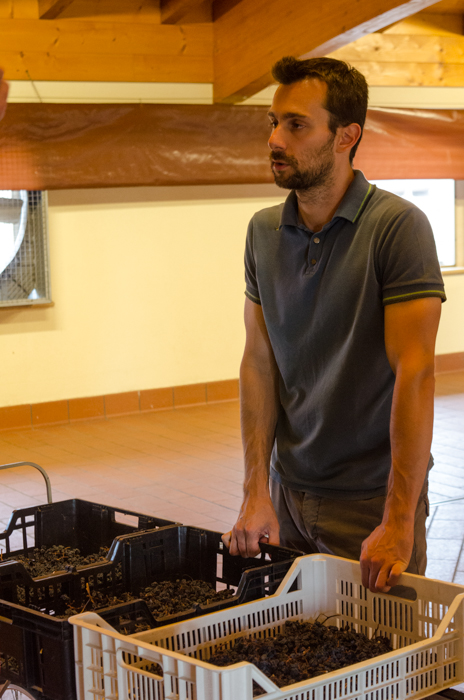 Alberto personally led our tour, and our first stop were the drying rooms. A spacious loft, outfitted with large windows with fans as well as an extensive environmental control system to ensure just the right amount of ventilation and humidity throughout the four month drying process. The first grapes from the harvest were just making their way into these lofts. The grapes are picked by hand, and any with broken skins are eliminated as the grapes must be unblemished in order to dry without rot. The Corvina grape, the predominant grape in Amarone, is thick skinned, and so well-suited for the drying process.
Alberto personally led our tour, and our first stop were the drying rooms. A spacious loft, outfitted with large windows with fans as well as an extensive environmental control system to ensure just the right amount of ventilation and humidity throughout the four month drying process. The first grapes from the harvest were just making their way into these lofts. The grapes are picked by hand, and any with broken skins are eliminated as the grapes must be unblemished in order to dry without rot. The Corvina grape, the predominant grape in Amarone, is thick skinned, and so well-suited for the drying process.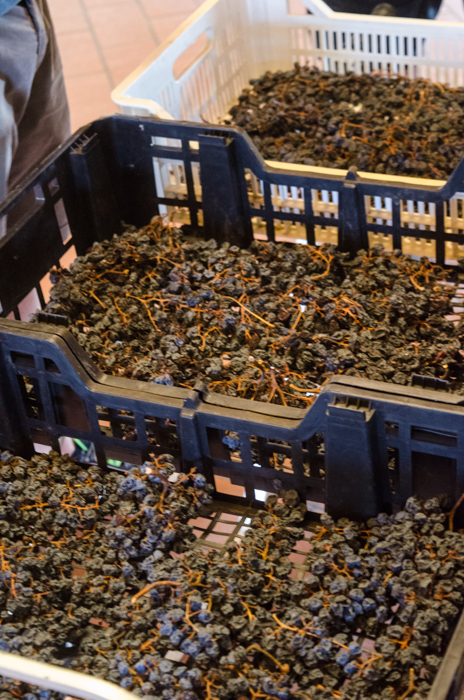 The pristine grapes are carefully laid in a single layer in plastic baskets, which are then stacked on a pallet. At the end of harvest, these plastic baskets fill the loft, extending floor to ceiling. The grapes dry here for 3-4 months, during which they loose 40% of their volume. The grapes are then crushed, and sit on the skins for 40 days, a long slow fermentation at low temperature. allowing the concentrated sugars to convert into alcohol, resulting in Amarone’s characteristic high alcohol level.
The pristine grapes are carefully laid in a single layer in plastic baskets, which are then stacked on a pallet. At the end of harvest, these plastic baskets fill the loft, extending floor to ceiling. The grapes dry here for 3-4 months, during which they loose 40% of their volume. The grapes are then crushed, and sit on the skins for 40 days, a long slow fermentation at low temperature. allowing the concentrated sugars to convert into alcohol, resulting in Amarone’s characteristic high alcohol level.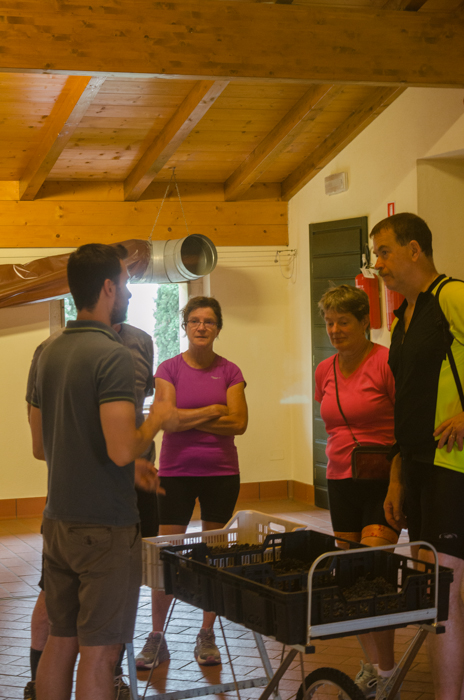 The juice is filtered off, and the wine begins its maturation for two years in barriques and tonneaux. The skins are not done yet, they are given a second role now in the production of Valpolicella “Ripasso”. The skins are then added to Valpolicella wine. These are still impregnated with sugars and yeast cells, and so set off a second fermentation, thus increasing the wine’s level of alcohol, as well as enriching its color, extract and aromas and thus improving its aging potential. The term used to refer to this process, “ripasso”, translates roughly to passing over again.
The juice is filtered off, and the wine begins its maturation for two years in barriques and tonneaux. The skins are not done yet, they are given a second role now in the production of Valpolicella “Ripasso”. The skins are then added to Valpolicella wine. These are still impregnated with sugars and yeast cells, and so set off a second fermentation, thus increasing the wine’s level of alcohol, as well as enriching its color, extract and aromas and thus improving its aging potential. The term used to refer to this process, “ripasso”, translates roughly to passing over again.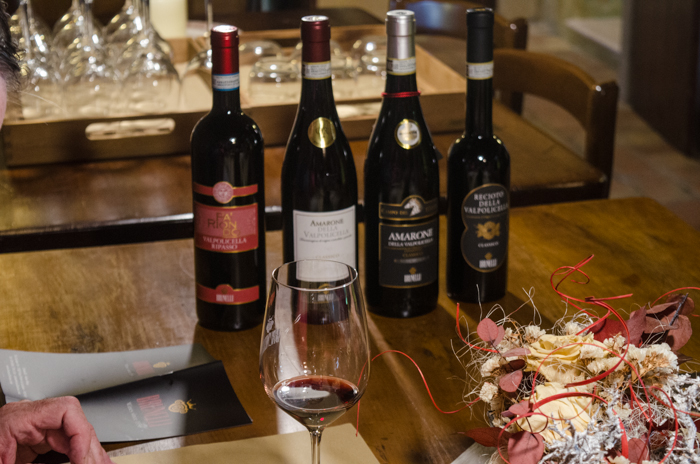 Brunelli makes a broad range of wines under the Valpolicella and Amarone DOC and DOCG regulations, including Valpolicella, Valpolicella Ripasso, and a few different Amarone. After our tour, Alberto guided us to a lovely tasting room where he introduced us to some of the stars of their portfolio.
Brunelli makes a broad range of wines under the Valpolicella and Amarone DOC and DOCG regulations, including Valpolicella, Valpolicella Ripasso, and a few different Amarone. After our tour, Alberto guided us to a lovely tasting room where he introduced us to some of the stars of their portfolio.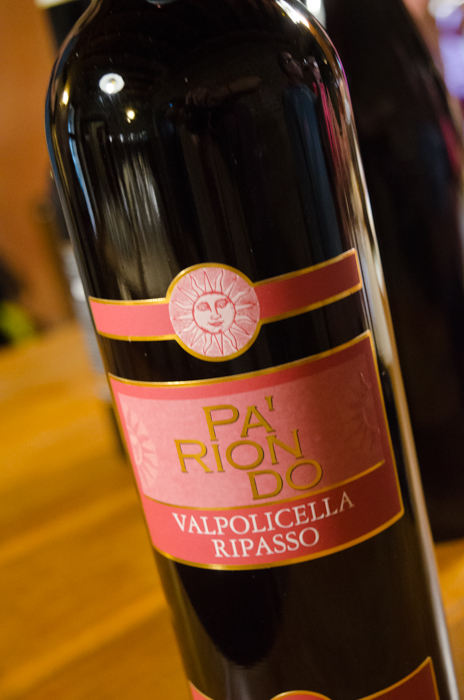 We began with the Pa’ Rionda Valpolicella Ripasso. A blend of Corvina, Rondinella and Corvinone, produced using the traditional Ripasso technique consisting of refermenting a Valpolicella Classico on the skins, still impregnated with sugars and yeast cells, of the semi-dried grapes previously used to make Amarone. It is aged for 12 months in oak and an additional 6 months in the bottel. Intense, with a deep ruby color, well balanced with flavors of currants and blackberries. is an immediately recognizable product of its area of origin.
We began with the Pa’ Rionda Valpolicella Ripasso. A blend of Corvina, Rondinella and Corvinone, produced using the traditional Ripasso technique consisting of refermenting a Valpolicella Classico on the skins, still impregnated with sugars and yeast cells, of the semi-dried grapes previously used to make Amarone. It is aged for 12 months in oak and an additional 6 months in the bottel. Intense, with a deep ruby color, well balanced with flavors of currants and blackberries. is an immediately recognizable product of its area of origin.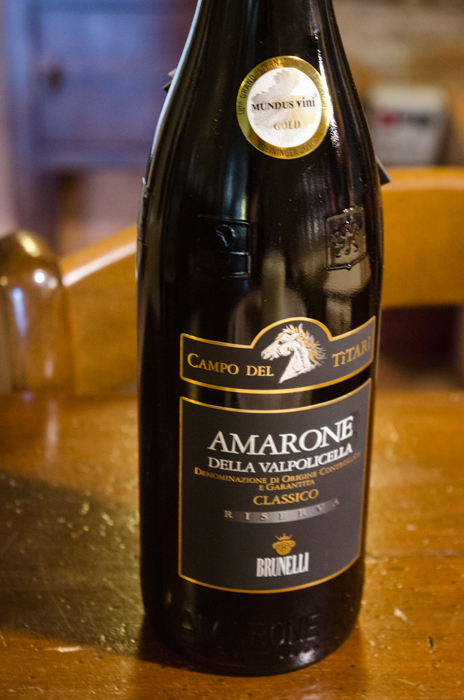 Another Amarone to try – their Amarone della Valpolicella Campo del Tìtari. This special selection of Amarone is produced only in the finest vintages and in very limited quantities. The grapes are very carefully selected through multiple selection stages, a blend of Corvina e Corvinone 75%, Rondinella 15%, and here, a small percentage of Sangiovese 10%. Created to be bold and intense, it displays a deep ruby color. Again aromas of cherries, berries and currants, mingling with vanilla. Robust, nice acidity, and a persistant finish. Alberto shared the origin of the name Campo di Titari, or “Field of Titari” , Titari was the name of the last horse the family owned. Alberto’s father saw similarities between the wine and the horse, both very dark, spicy, lively.
Another Amarone to try – their Amarone della Valpolicella Campo del Tìtari. This special selection of Amarone is produced only in the finest vintages and in very limited quantities. The grapes are very carefully selected through multiple selection stages, a blend of Corvina e Corvinone 75%, Rondinella 15%, and here, a small percentage of Sangiovese 10%. Created to be bold and intense, it displays a deep ruby color. Again aromas of cherries, berries and currants, mingling with vanilla. Robust, nice acidity, and a persistant finish. Alberto shared the origin of the name Campo di Titari, or “Field of Titari” , Titari was the name of the last horse the family owned. Alberto’s father saw similarities between the wine and the horse, both very dark, spicy, lively.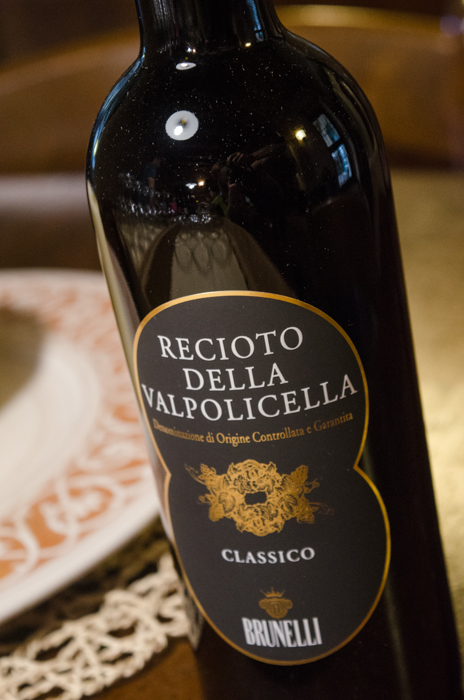 Finally, we ended with the region’s traditional dessert wine, a Recioto della Valpolicella. The name ‘recioto’ comes from ‘recie’, ears in the local dialect. The ‘ears’ of the grape bunch are those lobes on the top, which receive the most sunlight, and are therefore riper and drier, with more concentrated sugars. These are separated from the remainder of the bunch, dried, and are used to produce this sweet dessert wine. A recioto is fermented less time than an Amarone, to retain some sugar for this sweet wine. In fact, legend has it that Recioto is the grandfather of Amarone, as the very first Amarone was produced when someone forgot to stop the fermentation of a Recioto, and all the sugars were consumed. The result was a very dry wine, which when tasted caused the winemaker to exclaim “Amarone”, or very bitter (amaro).
Finally, we ended with the region’s traditional dessert wine, a Recioto della Valpolicella. The name ‘recioto’ comes from ‘recie’, ears in the local dialect. The ‘ears’ of the grape bunch are those lobes on the top, which receive the most sunlight, and are therefore riper and drier, with more concentrated sugars. These are separated from the remainder of the bunch, dried, and are used to produce this sweet dessert wine. A recioto is fermented less time than an Amarone, to retain some sugar for this sweet wine. In fact, legend has it that Recioto is the grandfather of Amarone, as the very first Amarone was produced when someone forgot to stop the fermentation of a Recioto, and all the sugars were consumed. The result was a very dry wine, which when tasted caused the winemaker to exclaim “Amarone”, or very bitter (amaro).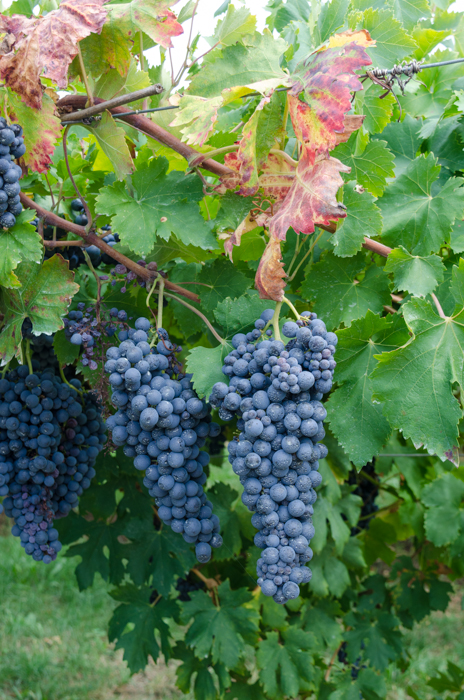 For the Brunelli Recioto, he fermentation process lasts 30 days (rather than 40 for the Amarone) and is arrested by chilling the wine, leaving a substantial amount of residual sugars. The wine then matures in oak barriques for around 8 months, then spends another 6 months in bottle before being released onto the market. Deep red, very aromatic with both floral and fruity notes. Flavors of cherry and raisin, as well as sweet spices and caramel. Complex, full-bodied and robust, enjoy with pastries, nuts, fruit desserts and blue cheeses.
For the Brunelli Recioto, he fermentation process lasts 30 days (rather than 40 for the Amarone) and is arrested by chilling the wine, leaving a substantial amount of residual sugars. The wine then matures in oak barriques for around 8 months, then spends another 6 months in bottle before being released onto the market. Deep red, very aromatic with both floral and fruity notes. Flavors of cherry and raisin, as well as sweet spices and caramel. Complex, full-bodied and robust, enjoy with pastries, nuts, fruit desserts and blue cheeses.